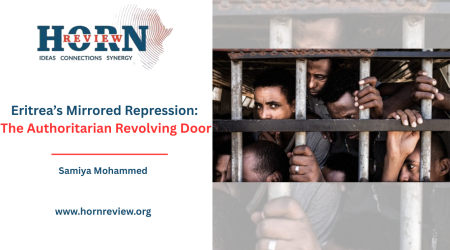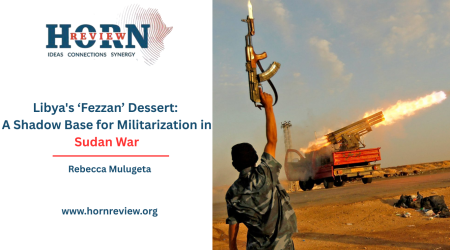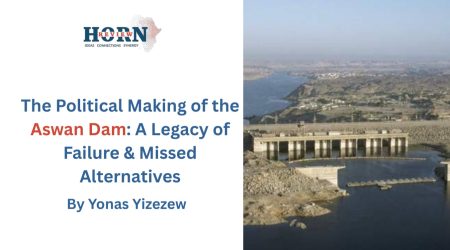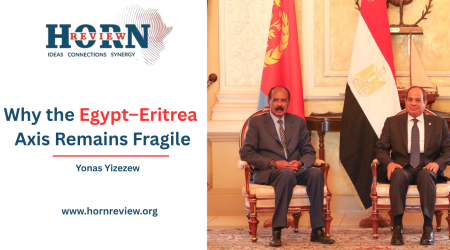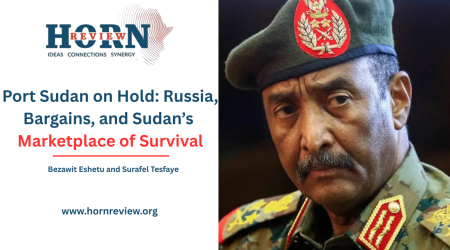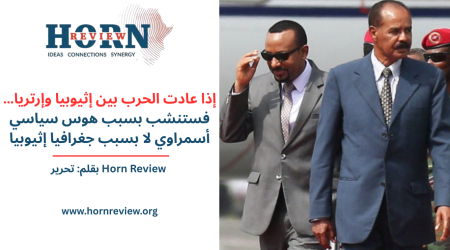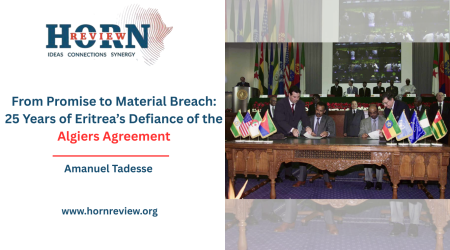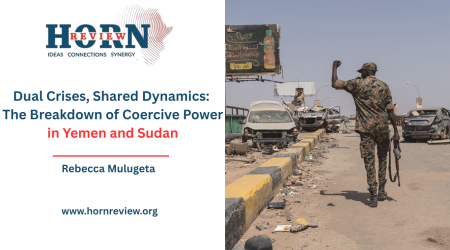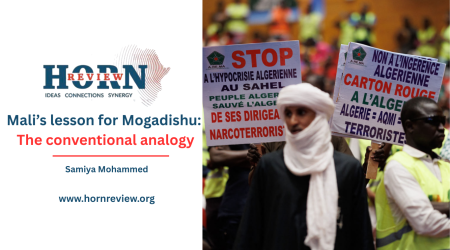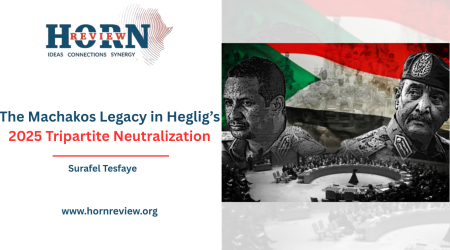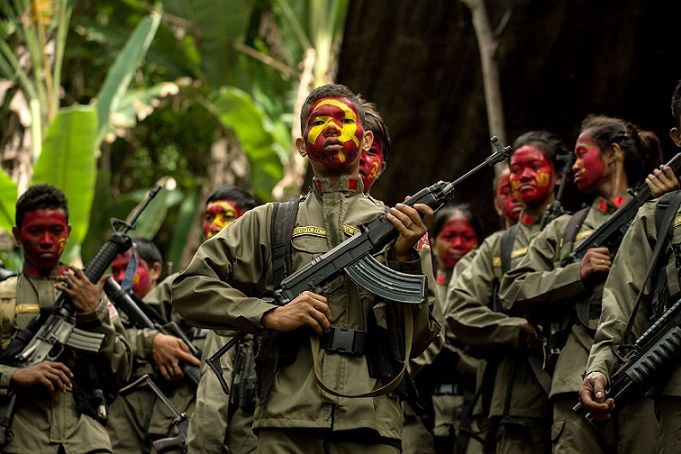
7
Oct
A Truce In India’s Maoist Insurgency: Lessons For The Horn Of Africa
In world war swing there are no truces that are halts between battles but indications of changing currents in politics and strategy. India’s Maoist Communist Party insurgency called the Naxalite movement, after four decades of relentless violence, caught onlookers by surprise in 2025 when it issued a short-term ceasefire and an open call to direct peace negotiations with the federal government. Rather than being a distant event, this change runs strongly with the weak security situation in the Horn of Africa where various groups of insurgents conflict and destabilize the region, which link especially the red sea and strait babel mendend, hormuz in the region which the largest three continents joined not only that region which the largest world logistic carried. From this region the unstable Eritrea-Ethiopia border, where truce by armed militias’ gives reflects the strategic realignments on the Eurasia and south east asia region. Characteristically, this crisis is complicated by Ethiopia’s native domestic insurgencies that coincide with competition across the region by Egypt, Somalia, and Sudan, producing a security mosaic that requires novel analytical approaches and novel policy reactions.
The Naxal-Maoist insurgency in India has severely destabilized the central and eastern regions known as the Red Corridor by fostering prolonged violent conflict that has claimed thousands of lives, disrupted governance, and hindered economic development. The insurgency has defied state power by attacking security forces and installations, subjecting people to a culture of fear. While rebels exercised a rudimentary control and sometimes provided basic services in certain rural areas due to the state’s absence, their violent methods increased poverty and underdevelopment. The violence uprooted people, undermined major development projects, and impacted the Eurasia region.
The Maoist ceasefire is not a retreat tactic but a strategic direction, a deliberate peace move founded on reducing returns on armed struggle and increasing pressure from both military action and internal divisions. It is an acceptance that political reconciliation, not military victory, is the true road to lasting change. Following decades of war fueled by ideology and structural grievances, this new development mirrors war weariness and pragmatic recognition of shifting political opportunities. This strategic opening has enormous ramifications for the Horn of Africa, where the same forces are in play. Specifically, the recent actions of Eritrean border militias, the border clashes between Sudan’s RSF and SAF, and Al-Shabaab’s cross-border activities along Somalia’s border all demonstrate that regional armed groups are also active in complex spaces that could possibly be vulnerable to the same strategic recalibration for peace.
In comparison with India’s Maoist rebellion, Ethiopia’s domestic turbulence is complicated by various simultaneous factors like intergroup tensions, race for power, and ongoing border wars with external powers. These external players often fund proxy militaries within the country. The Ethiopian rebellion, and indeed across the Horn of Africa, has its basis in a weak political structure that is unable to balance political autonomy with ethnic identity. This makes a ceasefire both politically risky and an absolutely required option. The linked dynamics between external wars along borders, such as with Eritrea, and internal rebellions within Ethiopia form a daunting security dilemma. Internal instability reduces the federal government’s capacity for border control, while unbundled issues of borders make security groups more powerful and jeopardize domestic peacebuilding efforts. Such interconnectedness induces instability in the wider region, as Egypt’s Nile interests, Somalia’s unstable governance, and Sudan’s transition politics are all inseparable from Ethiopia’s security meltdown.
Ethiopia’s response to such uprisings and border conflicts is premised on the firm defense of its interstate national interests. It has met threats with resistance as it maintains the quest for political reform and reintegration that strengthens regional security and social cohesion. One illustration of this is the progress following the Pretoria Peace Agreement in Tigray, which is experiencing concrete dividends of peace efforts, improved service delivery, economic rebound, and a return to the rule of law. In addition, Ethiopia’s national security policy adopts a comprehensive doctrine which defends borders, guides regional concerns, and opposes asymmetric threats and improves institution building incrementally. This opens for active interaction with rebel movements advocating inclusive political processes of sustainable peace. India’s Maoist ceasefire is therefore a positive sign for Ethiopia ideologically or ethnically driven armed conflicts can have peaceful avenues when there exists an element of mutual gain by negotiating parties.
India’s Maoist ceasefire is therefore not just a domestic political procedure but a model that can be replicated to comprehend and contain long-lasting conflicts under unfavorable conditions. It shows that ceasefires may constitute an insurgent’s strategic action to demonstrate negotiating interest even as one navigates through dangerous political terrain. For Ethiopia and its immediate neighbors, embracing this lesson means thinking of ceasefires not as conclusions but as inflection points in moments of transformation within conflicts that necessitate broad political engagement and cautious regional diplomacy. The broader implication is significant that lasting peace in the Horn of Africa relies on reconciling intra and border conflict resolutions within regional collaboration structures that resolve cross-border disputes and common security issues. Global actors, being peace-brokering seasoned actors, must ensure to give precedence to underwriting forums of dialogue addressing Ethiopia’s ethnic insurgencies as well as Eritrea-Ethiopia border conflicts jointly due to spillover into Sudanese and Somali crises.
At this point, the concurrence of insurgency travails and ceasefire signals across India and the Horn makes manifest a universal reality of modern conflict resolution. Even the most entrenched armed conflicts carry within them phases of strategic opportunity windows when negotiations can prevail over decades of bloodshed and distrust. For decision-makers and analysts, the task is clear to transform such fragile openings into durable peacebuilding processes.
The Maoist truce and ceasefire by militias are more than singular gestures of ceasefire, they are linked parts of a bigger picture of conflict management in complex conflicts in the context of geopolitical competition and internal national challenges. The Ethiopian insurgency, with its entanglement with regional tensions and foreign border strife, highlights the necessity of employing adaptive conflict resolution approaches informed by lessons from distant yet perceptive cases such as India’s Maoists. It’s only by embracing such holistic, knowledgeable, and bold tactics that the Horn of Africa hopes to transform moments of ceasefire into lasting stability and peace.
By Rebecca Mulugeta, Researcher, Horn Review

